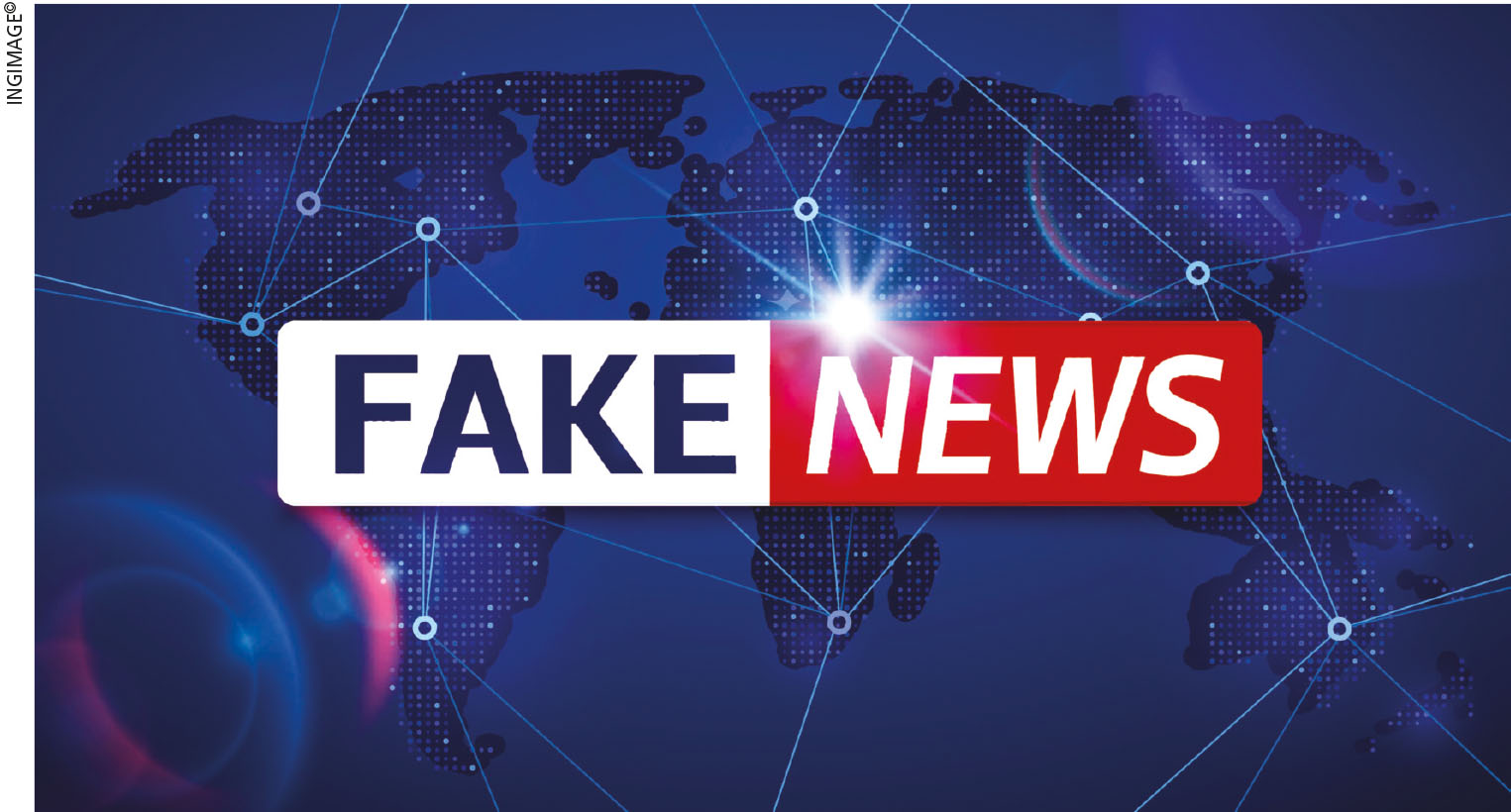THE ‘INFODEMIC’
STRANGER THAN FICTION!
Sandesh Bartlett explains why fake news is particularly dangerous and spreads
The lack of infrastructure governments had at their disposal to control the subsequent ‘infodemic’ regarding the coronavirus was one among a myriad shortcomings made evident by the COVID-19 pandemic.
Yet, it is possibly the most critical inadequacy of our time, influencing global responses to challenges related to health, politics and the environment among others.
Swathes of the general public have dropped their masks in favour of drinking hot water, shirked physical distancing measures and dismissed the coronavirus as ‘nothing more than a cold’ based on questionable information a ‘trusted friend’ shared on social media.
While misinformation or ‘fake news’ has been an irrevocable part of human communication for centuries, the internet has magnified its impetus, and made its grip on the everyday events that shape our world a quagmire of truths, part truths and unabashed falsities masquerading as scientific fact.
The WHO has noted the role misinformation plays in the pandemic response, acknowledging that while the internet has been successful in keeping people informed about the coronavirus, the concurrent rapid spread of misinformation also undermines the global response and jeopardises measures to control COVID-19.
A Gallup survey in March questioned participants across the world on whether they believed the pandemic was the product of a foreign complot. Surprisingly, developed countries such as the Netherlands answered ‘yes’ nearly 50 percent of the time with populous nations including India, hotbeds for renewed outbreaks, recording above 25 percent.
Yet, the dangers of fake news do not end at public health.
Time notes that in the 2016 US presidential election, coordinated hacking and the exposure of sensitive information was complemented by propaganda released across platforms, such as YouTube, Facebook, Twitter and Instagram with fake accounts corroborating misinformation in what it calls ‘information warfare’ to support Donald Trump’s election.
It is little wonder why a release from Stanford Engineering on ongoing research notes that to say Russian influence in the 2016 US election ‘was viral’ wouldn’t be an understatement.
Modelling the spread of fake news akin to that of a virus, Stanford professor Elisabeth Pate-Cornell and doctoral candidate Travis Trammell note that even as multiple strains of a virus wear down an individual’s resistance, so too can consistent exposure to fake news make individuals more susceptible.
The researchers also reveal that the speed at which fake news spreads is because bots – automated programmes masquerading as real people – ‘infect’ those who are like-minded, creating a vacuum of internal corroboration that solidifies belief (take for example, two groups of ‘anti-vaxers’ and conservative white supremacists from which a subset of climate change deniers exists).
On the contrary, trolls – real people proactively spreading false news through memes and other forms of media – are more likely to reel in those on the fence who are less convinced and want more information that is easy to digest.
This is compounded by the ‘power law’ of social media where messages replicate quicker when targeted at small groups of people with large followings and the confirmation bias – a tendency to believe stories that reinforce personal convictions.
Given that a separate study by the Pew Research Center found that misinformation is also likely to make people distrust credible information and fall into a self-perpetuating trap of polarised views spurred on by algorithms, it becomes obvious how damaging fake news is to both influential avenues such as politics and public health to everyday activities like general communication.
With the onus falling on social media platforms to fact check what is shared online, steps have now been taken to help cauterise the spread of misleading content.
Dubious claims found online can be channelled to fact checking centres to be cross-referenced by humans who in turn stop the spread of the information upon review. Additionally, other services exist where websites may be flagged and ranked by their credibility.
Lastly, automated systems with adjusted algorithms on social media can also isolate fake news by ascertaining trustworthiness based on for example, how old the source website is.
However, global efforts against the spread of fake news may be mobilising past the point of an effective outcome. The world is at a crucial juncture; trust and truth are fast eroding in a world that must contend with COVID-19, a critically important US election, climate change and the collapse of democratic infrastructure.
With President Trump undermining the credibility of postal ballots to curb a democratic blue tick, and a growing distrust for rational thought in regards to vaccines, climate change and democratic freedoms, the drive to combat fake news might be too little too late.







Leave a comment